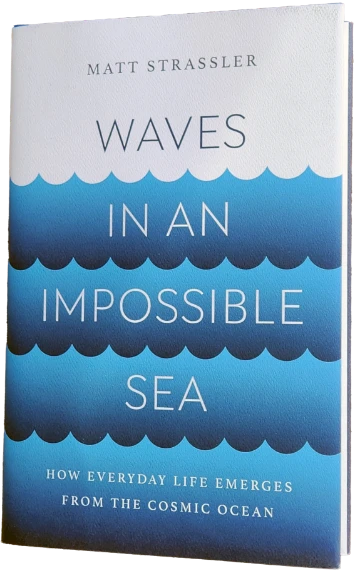
If you were to browse my library, you’d quickly notice there are a lot of sci fi and science books in it. That’s probably because understanding how the world works has always been a passion of mine1. I still remember the couple of pamphlets I picked up at some science exhibit at the 1964 World’s Fair (it was in New York City) which introduced me at the tender age of nine to quantum mechanics by explaining what electron shells were about and why the periodic table, otherwise so nicely organized, has those silly two rows sort of glued onto the bottom of it.
I really wanted to be a theoretical physicist when I grew up but decided when I had to pick a major in college that (a) I wasn’t smart enough to have a shot at the top of the field (why settle for being in the second, third, fourth, etc., tier when you can be higher up someplace else 🙂 ?) and (b) pursuing that interest would mean little time in my academic schedule to take all the other really cool courses available. I ended up pursuing molecular biology because understanding how living things work is almost as interesting to me as physics, and it resulted in a BA degree rather than a BS, so I could take a lot of out-of-major courses.
Nonetheless, I’ve always had a weakness for well-written books about cutting-edge physics. Besides, it’s fun to appreciate, however dimly, what we haven’t figured out yet. Did you know quantum mechanics and general relativity, both of which have been experimentally confirmed to an amazing degree, differ in their predictions for a certain property of the universe by a cool 10 ^ 120 (that’s a 1 followed by 120 zeros)? That kind of thing is exciting…because it means there’s still important stuff to discover. Who’d want to live in a world where we knew everything? Not me; sounds incredibly boring.
Which brings me to Waves in an Impossible Sea, by Matt Strassler, a theoretical physicist at Havard. It is, without a doubt, the single best physics-for-dummies book I have yet come across. Believe it or not, by the end of it you’ll have a decent intuitive grasp of the basis of general relativity and quantum mechanics (not to mention Newtonian physics), where they fit together and where they don’t, and why many things that you’ve likely taken for granted about the universe have to be structured the way they are. All without any math other than a few equations you probably already know (Newton’s second law, the Einstein matter/energy equivalence formula and the Planck frequency/energy formula).
Waves in an Impossible Sea instantly earned a place in my (overcrowded) library, and is a volume I expect to re-read again and again over time, both because Dr. Strassler’s writing style is highly engaging and accessible and because some of the concepts, while clearly explained, are very subtle in their simplicity2
Highly recommended, even if you’re not that interested in theoretical physics.
One of my very early, admittedly hazy, memories involves seeing light switches on walls being flicked and wondering how that made lights turn on. ↩
I’m reminded of one of my favorite lines from a sci fi novel, Variable Star by Spider Robinson: the universe is so simple, it takes very complicated thought to touch it. ↩














































